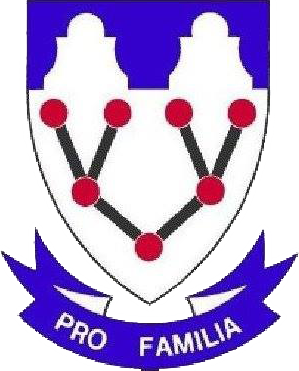Cape Town Memberships 1665-1832
The members of the original settlement at the Cape from 1652 onwards were supplied by the Dutch East India Company with a ziekentrooster (comforter of the sick). He held Sunday services where he was allowed to read certain passages from the scriptures and to instruct the children in their religion, but as a lay person he had no authority to administer the sacraments (offer Holy Communion, perform marriages and baptisms). Ziekentroosters up to 1665 were Willem Barentsz Wylant, Pieter van der Staal, Ernestus Back and Jan Jorisz Graa. Marriages were conducted either by the Commander (civil marriages were part of the normal system in the Netherlands) or by ministers passing on ships calling at the Cape and these latter also conducted any baptisms required.
Eventually the Dutch East India Company management decided to appoint a resident minster at the Cape (all such religious ministers were company salaried officials) and on 18th August 1665 Dominee Johannes van Arkel landed at Table Bay. Later a church was built and its present day successor is the Grote Kerk in Cape Town. At that time this particular denomination, which enjoyed the status of "public" or "privileged" church of the Dutch Republic, was known as the 'Nederduitsche Gereformeerde Kerk' but renamed the 'Nederlandse Hervormde Kerk' (Dutch Reformed Church - DRC) in the Netherlands in 1816. At the Cape (then under British rule), however, it retained its original name and in modern day South Africa it is known as the Nederduitse Gereformeerde Kerk (NGK).
Most baptisms, some marriages and a single list of sixteen members of the congregation before the start of this register, were recorded and sent as annual reports to the Classis Amsterdam by the sieketrooster. See the transcripts of the Classis Amsterdam and in particular the Van der Stael Letters for more detailed information.
After the arrival of Rev. Van Arkel, proper church registers were kept. The first register, as bound today, contains baptisms (p. 1 - p. 60), members (p.61 - p. 73), marriages (p. 75 - p. 91) and minutes of the church board (p. 92 - p. 115) covering the period 1665-1695.
To become a member of the congregation, and to participate in the Lord's Supper or Holy Communion (Heilige Avondmaal), the candidate had to make a public re-affirmation of his faith which had originally been affirmed for him at his baptism. This could either be done in the presence of the church board and the congregation. Alternatively the church board would accept written proof of re-affirmation (attestatie) from a sister congregation. One of the tasks of the church board was to a keep a register (lidmaatregister) of persons who had made this public re-affirmation of the faith (openbare belijdenisse des geloofs).
As far as these lists of members are concerned, the entries were initially not accompanied by a date. By comparing the handwriting of these with those sections containing the entries of baptisms and marriages, however, an approximation of the dates can be made. The first baptism and marriage entries were made by 'ouderling' Abraham Schut, and the first membership entries appear to have also been made by him, suggesting a date for them of around August 1665. The next deduced date is for the second page where the handwriting changes and corresponds to May 1667 in the baptism register (and the arrival of Johannes de Vooght). The third section corresponds to August 1673 (and the arrival Rudolphus Meerlandt). The first mention of an actual date is '1676' written in the left margin of page 64 and an entry dated 'half November 1677' on the same page. This is also accompanied by a change of handwriting which corresponds to the March 1676 in the baptisms.
Terms (and variations) often encountered in the lists are the following:
- met attestatie gekomen van . . . (arrived with certification from . . .)
- met attestatie vertrocken naar . . . (departed with certification to . . . )
- door belijdenisse haeres geloofs aengenomen (accepted by reaffirmation of the faith)
- doot / dood / overleden (deceased)
- tot het gebruijck des Heerens Heilige Avondmael (to participate in the Lord's Supper / Communion)
The transcription was done by Corney Keller and reviewed by Richard Ball. The register has been transcribed exactly as found, that is text and spelling as best we can read them. In order to make the reading easier we have transcribed all personal names, geographical place names and names of months, as well as the beginning of sentences or entries, to begin with an upper case letter, although this is not always how they are written in the original. In addition, with certain letters it is not always possible to judge if upper or lower case is intended.
We hope these transcripts may be of some use to researchers.
Corney Keller
© February 2016
- Hits: 55917

